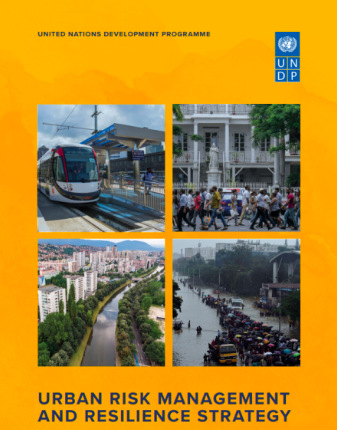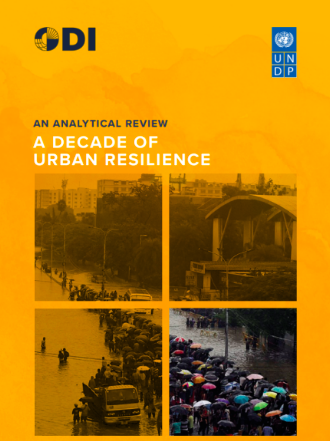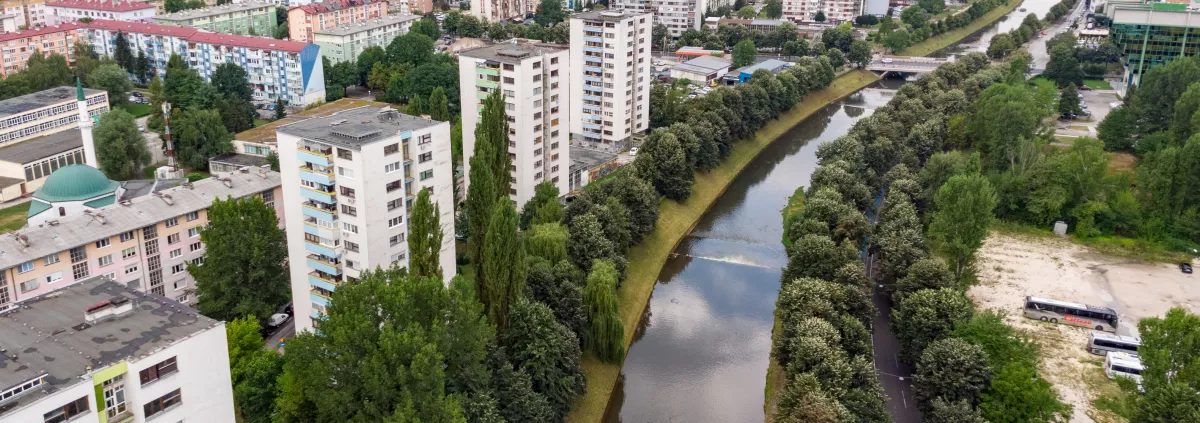In an already urbanized world, an increasing concentration of people, development assets, infrastructure, socio-economic vulnerabilities and convergence of risks of multiple underscores the need for an integrated approach towards resilience building. This is evidenced by the fact that cities today account for 55% of humanity, 70% of GHG emissions and 80% of global GDP. It is estimated that nearly 84% of fastest growing cities face high vulnerability to disaster/climate risks putting $4tn worth of assets at risk and that nearly 43% of people in fragile contexts are living in cities, expected to rise to 48% by 2030 and 59% by 2050.
A Decade of Urban Resilience: An Analytical Review analyzes urban risk and resilience related policies and frameworks, flagship programs implemented, and the tools deployed to diagnose urban resilience over the past decade to identify existing unmet demands and emerging priorities. The review is complemented by perspectives by experts and practitioners from academia, private sector, civil society, think-tanks, development partners and donors, IFIs, government entities, UN agencies UNDP's global, regional and CO teams drawn from different thematic workstreams and others.
The Analytical Review has identified existing gaps in urban resilience building, current demands from city and national counterparts while also identifying emerging needs and priorities which are sought to be addressed through policy and programmatic action in line with the Urban Risk Management and Resilience Strategy.
Based on the analytical review of urban risk and resilience initiatives over the past decade, the Urban Risk Management and Resilience Strategy presents an evidence-based rationale, vision and structured approach to engage on urban resilience and risk management, and to contribute to SDG-11 (Sustainable Cities and Communities) while advancing implementation of the Sendai Framework for Disaster Risk Reduction, the Paris Agreement and the New Urban Agenda. The Strategy seeks to advance the UNDP Strategic Plan (2022-25) outcomes by bringing its disaster and climate risk management practice closer with its climate change and development agenda through ramped up action at city level to protect development gains against multidimensional and systemic risks and build resilience.
Five strategic priorities which guide intensified commitments and augmented action include:
- Addressing neglected geographies with greatest capacity and resource gaps such as cities in LICs, LDCs, SIDS and LMICs;
- Engaging diverse stakeholders and interest groups to strengthen urban governance for a better connect between national policy and city implementation;
- Amplifying marginalized voices to cater to needs and vulnerabilities of weaker segments in city decision-making to ensure that no one is left behind;
- Augmenting technical and financial capacities of less-resourced cities to manage multi-dimensional risks; and
- Harnessing innovation and digital technologies to build resilient urban futures.
Watch the Development Dialogue Session:
Managing Urban Risks and Building Resilience: An Old Challenge has Gained New Urgency



Please log in or sign up to comment.